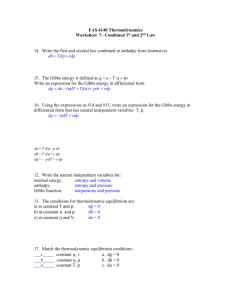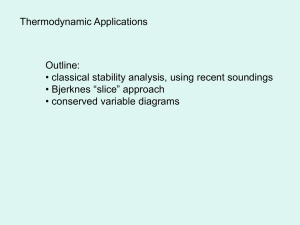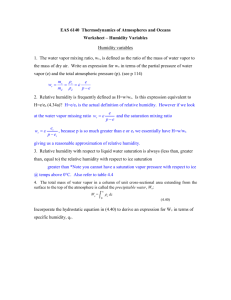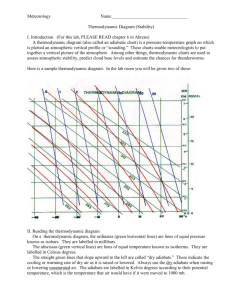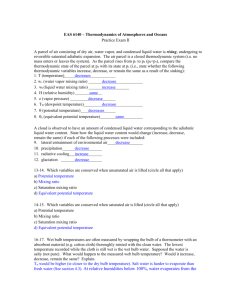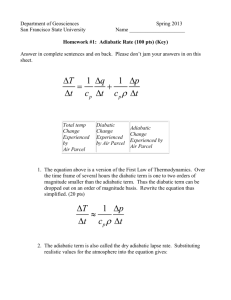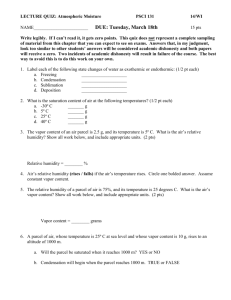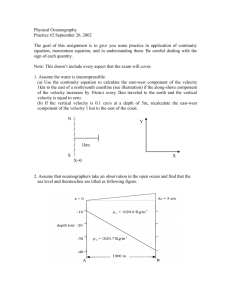Hwk7_Sp2015_Key - Department of Earth & Climate Sciences
advertisement
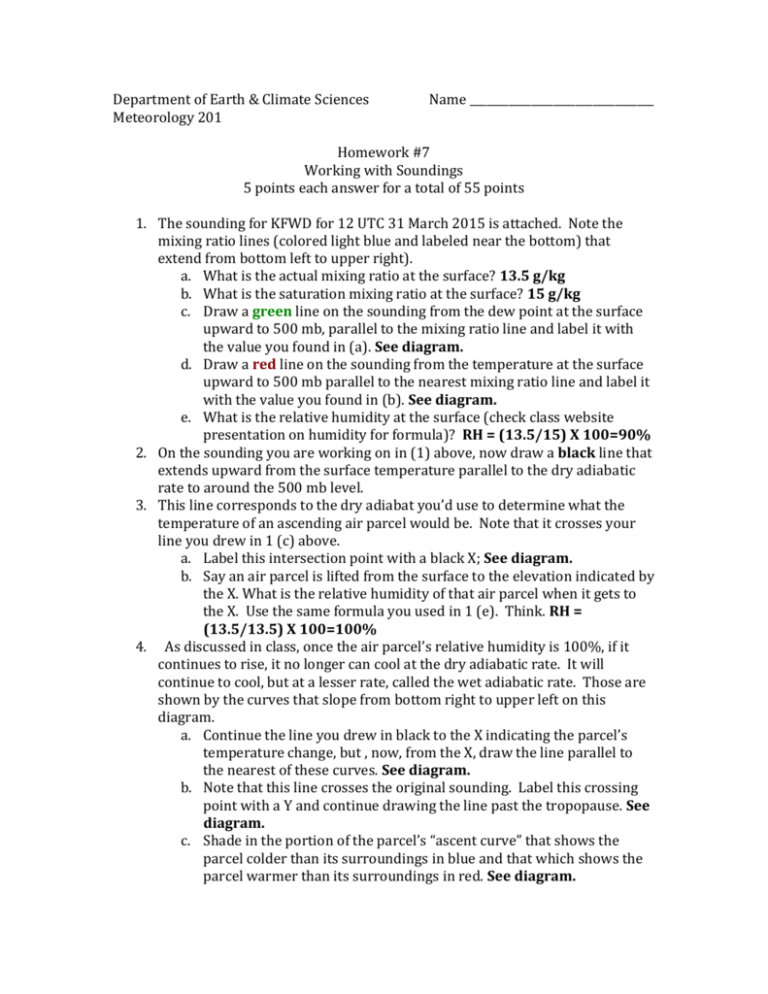
Department of Earth & Climate Sciences Meteorology 201 Name _________________________________ Homework #7 Working with Soundings 5 points each answer for a total of 55 points 1. The sounding for KFWD for 12 UTC 31 March 2015 is attached. Note the mixing ratio lines (colored light blue and labeled near the bottom) that extend from bottom left to upper right). a. What is the actual mixing ratio at the surface? 13.5 g/kg b. What is the saturation mixing ratio at the surface? 15 g/kg c. Draw a green line on the sounding from the dew point at the surface upward to 500 mb, parallel to the mixing ratio line and label it with the value you found in (a). See diagram. d. Draw a red line on the sounding from the temperature at the surface upward to 500 mb parallel to the nearest mixing ratio line and label it with the value you found in (b). See diagram. e. What is the relative humidity at the surface (check class website presentation on humidity for formula)? RH = (13.5/15) X 100=90% 2. On the sounding you are working on in (1) above, now draw a black line that extends upward from the surface temperature parallel to the dry adiabatic rate to around the 500 mb level. 3. This line corresponds to the dry adiabat you’d use to determine what the temperature of an ascending air parcel would be. Note that it crosses your line you drew in 1 (c) above. a. Label this intersection point with a black X; See diagram. b. Say an air parcel is lifted from the surface to the elevation indicated by the X. What is the relative humidity of that air parcel when it gets to the X. Use the same formula you used in 1 (e). Think. RH = (13.5/13.5) X 100=100% 4. As discussed in class, once the air parcel’s relative humidity is 100%, if it continues to rise, it no longer can cool at the dry adiabatic rate. It will continue to cool, but at a lesser rate, called the wet adiabatic rate. Those are shown by the curves that slope from bottom right to upper left on this diagram. a. Continue the line you drew in black to the X indicating the parcel’s temperature change, but , now, from the X, draw the line parallel to the nearest of these curves. See diagram. b. Note that this line crosses the original sounding. Label this crossing point with a Y and continue drawing the line past the tropopause. See diagram. c. Shade in the portion of the parcel’s “ascent curve” that shows the parcel colder than its surroundings in blue and that which shows the parcel warmer than its surroundings in red. See diagram.


